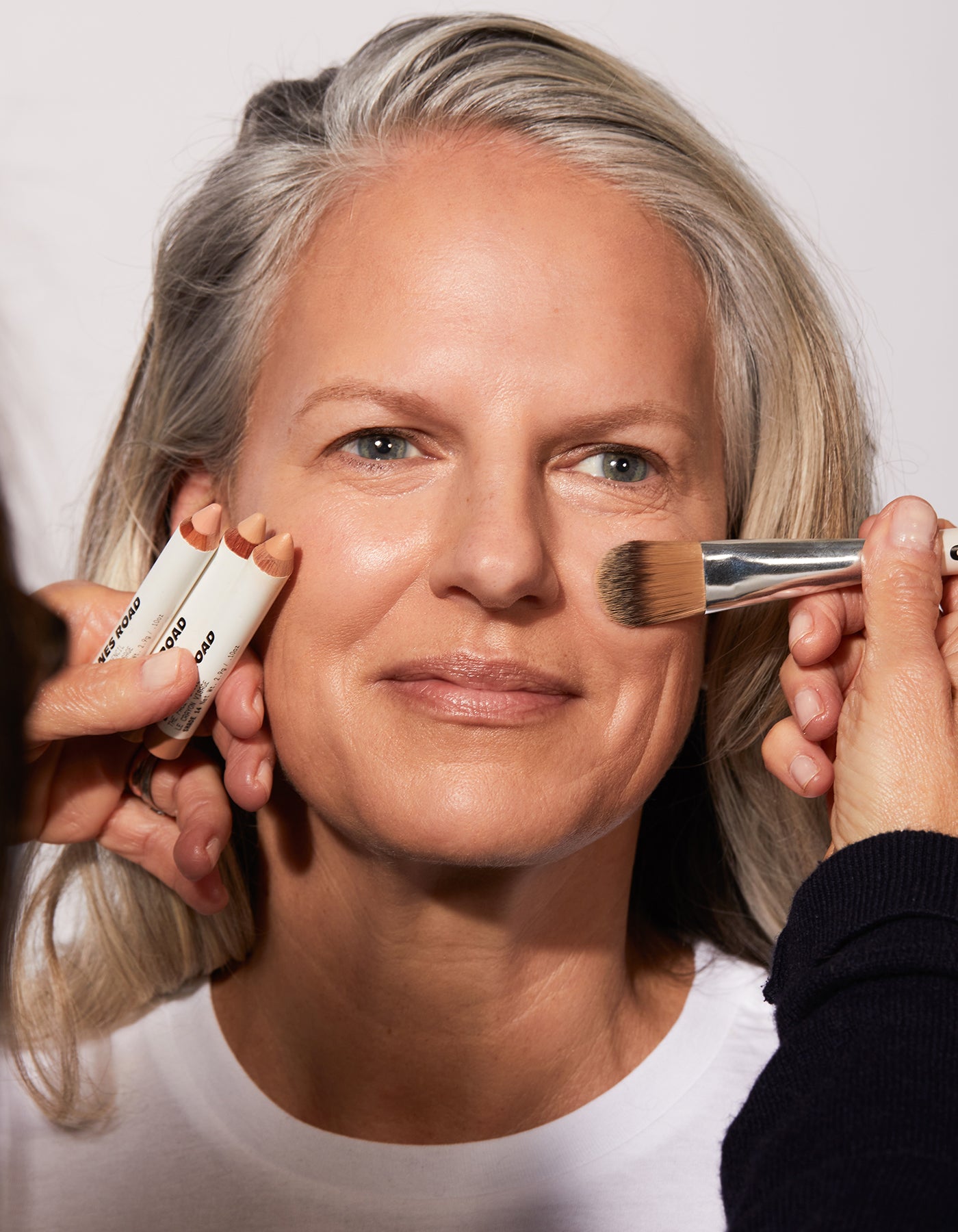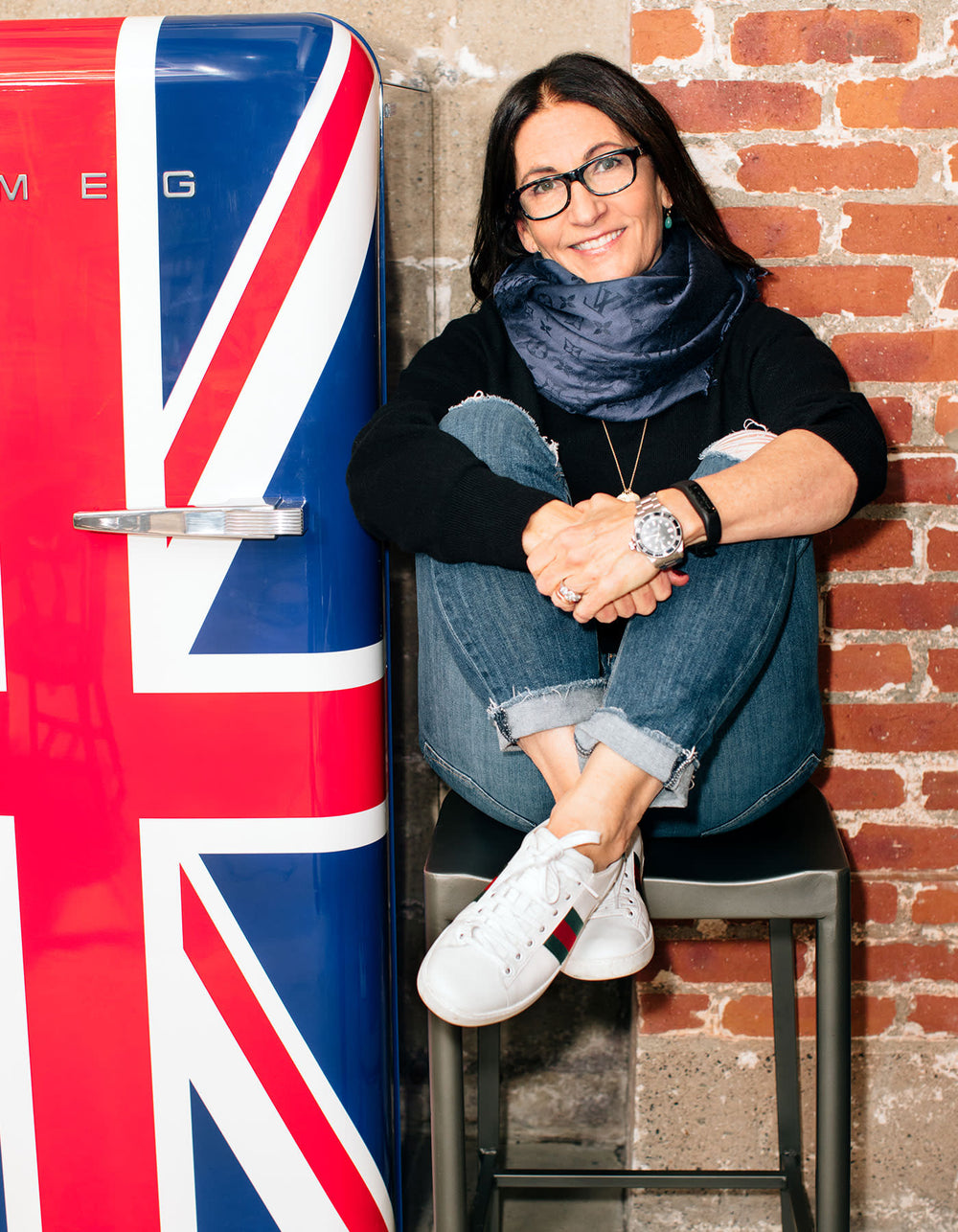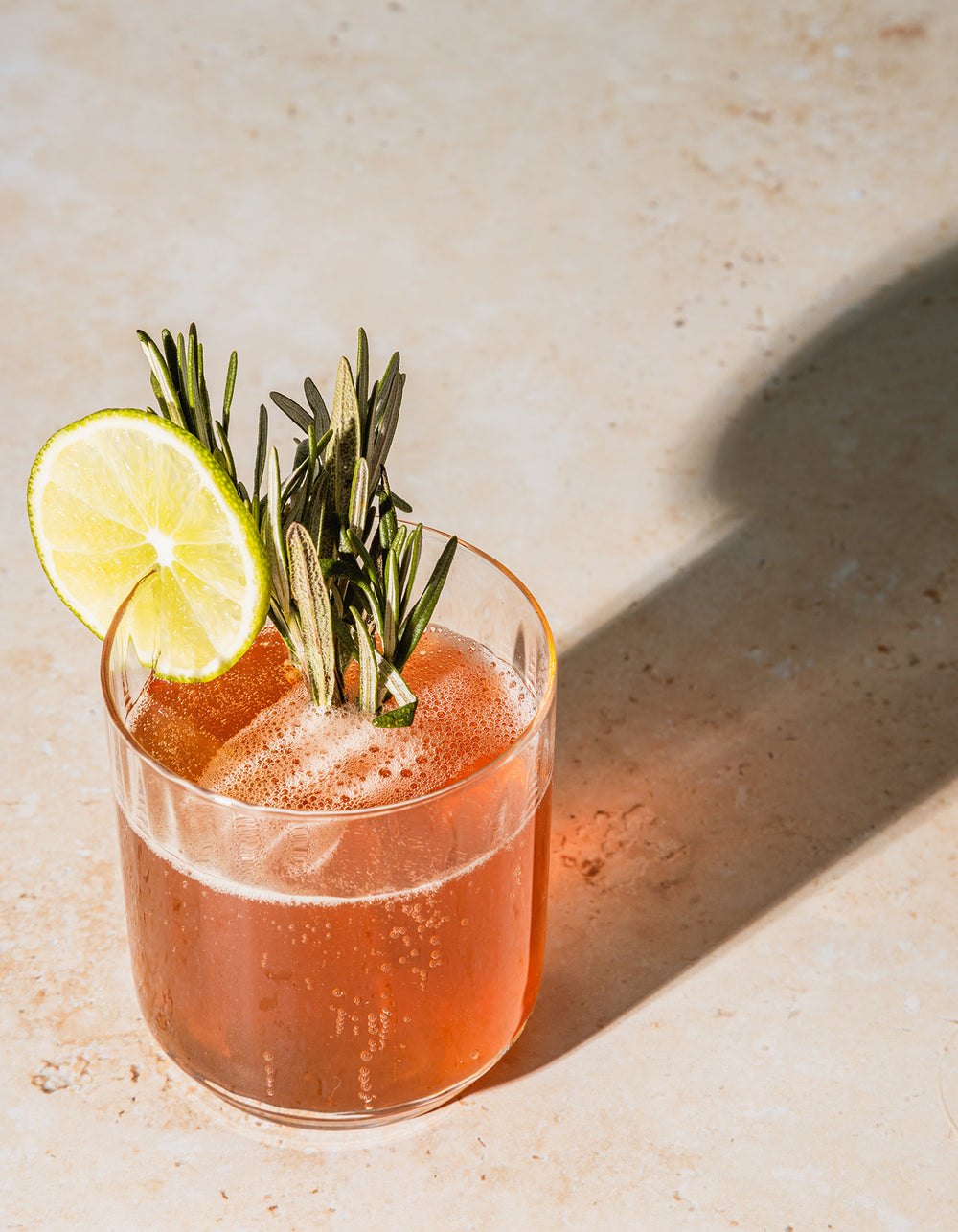Diary / Beauty / Jan 23, 2024
How to Cover Acne Blemishes With Makeup
Written by: Piper Gray
Photography by: Ben Ritter & Jon Patterson
We've all struggled with it at some point in our lives, and unfortunately acne doesn’t magically disappear after a certain age. It can stick around well into adulthood, but luckily there are effective ways to minimize and cover breakouts and redness.
Explore how to treat breakouts, prep and care for your skin, and apply the right products for a blemish-free finish that makes you feel confident and radiant in your skin.
Prevent What You Can
While we can't control all factors that cause breakouts (hormones, genetics), we can pay attention to patterns in order to treat and prevent:
Notice Your Triggers: Stress, sleep, diet, and certain skincare or makeup ingredients often precede breakouts — pay attention to changes in your routines to figure out the culprit.
Make Simple Modifications: Prioritize stress management and sleep, and eat as clean as you can. If you have sensitive skin, try to stick to using only gentle, clean ingredients on your skin.
Consult Experts: If you're dealing with persistent breakouts, you may want to consult with a dermatologist.
Prep & Care
Acne can spring up when we're least expecting it, but having some consistent routines and healthy habits in place can greatly reduce the risk of breakouts:
- Use clean hands and freshly washed makeup brushes
- Cleanse your face morning and night, and avoid going to bed with makeup on
- Moisturize! Even if you have
oily, acne-prone skin, proper moisture keeps it from overproducing oil
- Sunscreen is an absolute must for protecting skin, every single day
- Avoid picking and popping, this can cause irritation that makes coverage more difficult
Before reaching for your makeup, use these tricks to immediately soothe your skin:
Swelling: Apply a cool or warm compress to reduce inflammation. Avoid extreme temperatures that could increase redness.
Texture: For healing blemishes on dry, flaky skin, gently smooth the area with a damp washcloth. Then apply a gentle moisturizer like the Oil-Free Moisturizer to create a hydrated base to apply your makeup on top of. If your skin is consistently dry, try applying Miracle Cream before bed — its ultra-nourishing formula is a great overnight mask so you wake up ready to apply makeup to healthy, moisturized skin.
Find Your Perfect Match
Concealer alone might not be enough for stubborn breakouts. We recommend these four staples that were made to work seamlessly together for effective coverage that still looks and feels like your skin:
- The Neutralizer Pencil: Color-corrector for dark spots (like acne scarring)
- The Face Pencil: Concealer that targets redness without drying down
-
What The Foundation: A foundation that gives skin natural-looking coverage
-
Tinted Face Powder: Sets makeup and reduces shine
Pro Tip: Using too much product or the wrong shade can draw unwanted attention to the spot. Take our quick shade-matching quizzes on our website to find your perfect shades.

Cover Blemishes Like a Pro
While there’s no one-size-fits-all approach, our makeup artists stand by this routine for a fresh, even complexion:
Step 1: Apply The Face Pencil directly to blemishes or any redness (for minor blemishes, this step may be all you need for natural-looking coverage).
Step 2: Use The Neutralizer Pencil to color-correct dark spots, hyperpigmentation, and dark circles.
Step 3: Lift a pea-sized amount of What The Foundation and blend in to your face and neck.
Step 4: Step back and assess — you can go back to any of these products and build up your coverage where you might need a bit more.
Step 5: Set your makeup with Tinted Face Powder for extra staying power and to eliminate shine.
Remember to Relax
No one’s skin is perfect, and you don’t want to look filtered or poreless. You want to look like you, with skin that’s as healthy as possible. So when you have a flare-up, go easy on yourself.
Embrace what you have and accept that we all have hiccups from time to time. With consistent habits and these tips and tricks, you've got all you need to handle flare-ups with confidence.
 Miracle Balm
Miracle Balm
 Just Enough Tinted Moisturizer
Just Enough Tinted Moisturizer
 What The Foundation
What The Foundation











